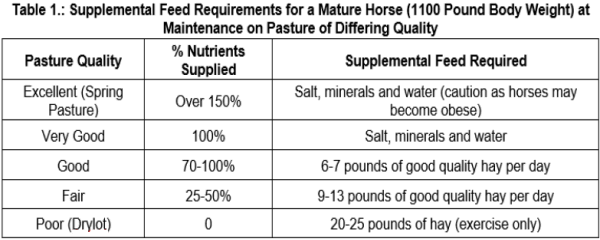

To send a message to an author, click on the author's name at the end of the article.
This Month in Ag Connection | Ag Connection - Other Issues Online
Succession planning is the process farm families utilize to transition the farm business to a younger generation. This process must include effective communication in order for the business to continue and for family relationships to remain healthy. Transitioning a business to the next generation requires planning and effort by all parties. Most families want to avoid disagreements and conflicts which can delay succession planning.
Effective communication includes choosing words carefully and clearly. It is also important to actively listen to each person. All persons need to share by both talking and listening, as differing viewpoints are inevitable. There needs to be respect, understanding and acceptance of differing viewpoints. All parties need to be honest, even when it is difficult. It is important to put egos aside and focus on how to productively move forward.
There are some preparation items to help "set the scene" for good communication. Scheduling ample time to discuss succession is important. If conversation is rushed that can often be interpreted as not being important. The location should be a comfortable, neutral site for all parties and ideally away from the farm. Interruptions should be eliminated, so consider no cell phones, no TV and no small children.
Listening until each person finishes speaking is important. Be cognizant of making eye contact, avoiding interrupting the speaker, be relaxed and let the person know you are listening. Understanding what the speaker says is important, so a listener can summarize what was just said. All of these things are important to make each family member feel heard and understood.
Following are some commonsense ground rules for family succession planning meetings.
University of Missouri Extension is offering six workshops statewide "Preparing for Farm Succession Planning". One of the workshops will be in Macon on August 8th from noon to 2 p.m. The workshops are co-sponsored by Missouri Department of Agriculture and FCS Financial. The workshops are free but require registration. For additional locations and more details visit the website: muext.us/ABPevents.
Source: Mary Sobba, Ag Business Specialist
This Month in Ag Connection | Ag Connection - Other Issues Online
It is important to maintain healthy tomato plants in order to avoid disease, but it is sometimes difficult to avoid disorders. Good management practices like mulching with straw or landscape fabric reduces fungal spores that are splashed up on the plant, which cause disease. Mulch also maintains soil moisture and prevents weed growth. Tomato fruits are 95 percent water; therefore, tomato plants need a lot of water to grow and develop fruit. Plants should receive at least 1 inch of water, which is equivalent to 5 gallons, per week. Soak the soil thoroughly when watering. Healthy plants are less prone to disease, but they are susceptible to several disorders as the season progresses including:
Herbicide damage: drift from 2,4-D and similar chemicals commonly used on lawns and in crop fields, may cause distorted leaves, twisted stems, dropping of flowers and fruit abnormalities. The drift may originate half a mile or more away. Sprayers used for herbicide and then used for disease and insect control on tomatoes may also be a source of contamination.
Walnut toxicity: plants growing near black walnut trees absorb a chemical called juglone secreted by the tree. This can cause them to wilt and die. Avoid growing tomato plants within 50 feet of these trees or where they may come into contact with walnut roots.
Leaf roll: most common on pruned plants and early-season varieties. Older and lower leaves of some tomato varieties may roll and become stiff and leathery. They will roll in response to heat and sun to reduce leaf surface area and moisture loss. Fruiting is not affected by this condition.
Flower drop: especially noticeable on early flowers when the grower is anxious for fruit to set for an early harvest. The problem occurs when night temperatures are lower than 55 degrees Fahrenheit, and day temperatures are higher than 95 degrees, or when night temperatures remain above 75 degrees. Hot drying winds may intensify the problem.
Blossom End Rot: occurs on the bottom or blossom end of the fruit and is caused by calcium deficiency. It appears as a sunken, water-soaked spot. The spot turns brown or black, and is dry and leathery as it grows larger. This disorder affects both green and ripe tomatoes. Bad spots can be cut out, and the rest of the tomato fruit can be eaten. Calcium deficiencies are usually the result limited root growth early in the season and wide fluctuations in soil moisture. Keep tomato plants well-watered to allow uptake of calcium from the soil. Mulch plants with four inches of straw or untreated grass clippings.
Cracking: a physiological disorder caused by wide fluctuations in soil moisture. Tomatoes often start to crack during warm, rainy periods, especially if this weather comes after a dry spell. The tomatoes expand too fast and are most likely to crack when they have reached full size and are beginning to turn color. Some resistant varieties include Early Girl and Jet Star. Apply adequate moisture throughout the growing season to avoid the problem.
Yellow shoulder/white cores: develop when high temperatures retard the development of good color, causing the shoulder or top of the tomato to turn yellow. Hard white cores in tomatoes are a heat stress disorder. Good foliage cover is helpful in preventing this. Keep plants well-watered and mulched, and consider erecting a shade cloth over plants if possible.
Source: Jennifer Schutter, Horticulture Specialist
This Month in Ag Connection | Ag Connection - Other Issues Online
A weed is an undesired plant that grows out of place and competes with the desired plants for water, nutrients and space. If weeds are not controlled in your pasture they can reduce forage yield, lower forage quality, and cause animal injury through toxicity. In order to reduce or prevent losses due to weeds, one should implement and maintain a weed management plan. This involves routinely scouting fields, weed prevention and control.
Weed control can be achieved through cultural, mechanical, biological and chemical control methods. These methods can be used alone or in most cases in combination with each other. Cultural management practices that promote a vigorous, healthy stand of the desired forage include; proper forage variety selection, good fertilization practices, maintaining an adequate pH and good harvest management, whether by grazing or haying. Soil testing is essential to ensure the soil pH, phosphorus and potassium levels are adequate for the forage species.
Mowing or brush hogging are effective mechanical control in weed and brush management. When used alone, mowing hides a problem but rarely gives good control. The effectiveness of mowing is enhanced when used in combination with other control methods such as good fertilizer and liming practices and herbicide management. Mowing brush like sumac, hedge (Osage Orange) or honey locust can actually make the problem worse. Timely mowing, from full leaf to blossom in the spring, can provide slow control over blackberries. Even with proper mowing, control may take several years to make meaningful progress. A late-season mowing of blackberries or other species of brush is only cosmetic and will give no long-term control.
Biological control can be used to control targeted weed species. An example of a targeted species in Missouri is the musk thistle. The introduction of the musk thistle head and rosette weevils has been effective in reducing the population.
Chemical control involves the use of selective herbicides, and generally provides the most effective control of troublesome weeds once they have become established. Before using any herbicide, read and follow label directions to determine appropriate rates, carrier volume and spray additives. For the herbicide to be effective it is essential to accurately identify the weed.
To help with weed identification, the MU Weed Science program has a Weed ID guide that can be found at http://weedid.missouri.edu/index.cfm. This is information is also available in the ID Weeds app. Weed and Brush Control for Forages, Pastures and Noncropland (https://extension.missouri.edu/publications/ipm1031) contains pictures and control information.
For additional information with herbicide selection or plant identification contact your local MU Extension Agronomy Specialist.
Source: Joni Harper, County Engagement Specialist in Agriculture and Environment
This Month in Ag Connection | Ag Connection - Other Issues Online
Horse owners can effectively use pasture to serve two necessary functions related to the care of their horses. Pastures provide horses an effective place to exercise, but also, if properly managed, can provide a significant portion of the horse's nutrient requirements. It is important to remember that horses evolved as a grazing animal where forages provided all their nutrient needs, and many horses of today can be effectively maintained on well managed quality pastures. Table 1 shows the percentage of nutrients pasture can supply to a mature horse.

A common stocking rate recommendation is 2-4 acres per horse. This range is necessary because there is limited information on grazing pressure or stocking rate for horses, plus there is variation in available forage due to the difference in growing conditions. Restricting your available land base results in over grazed, unproductive pastures.
In order to provide ample forage, horse owners need to use best management practices for the pasture. This includes regular fertilization, weed control, forage selection using forage species appropriate for your location and appropriate grazing management to use the forage produced. Horses are noted spot grazers or a better term may be selective grazers. If ample forage is available, horses will select the highest quality forage in the pasture. This is generally the most immature material. In many situations, if not controlled, horses will graze that preferred forage until it is removed from the pasture, leaving bare ground. Consider the following management practices for your horse pastures.
Pasture has the potential to be an excellent source of feed for your horses. However, it requires management like any other crop.
Source: (Excerpted from: Grazing Systems That Work With Horses; Bob Coleman Ph.D. Extension Horse Specialist; University of Kentucky, Lexington, Kentucky)

Publishing Information
Ag Connection is published monthly for Northeast and Central areas of Missouri producers and is supported by the University of Missouri Extension, the Missouri Agricultural Experiment Station, and the MU College of Agriculture, Food and Natural Resources. Managing Editor: Mary Sobba.